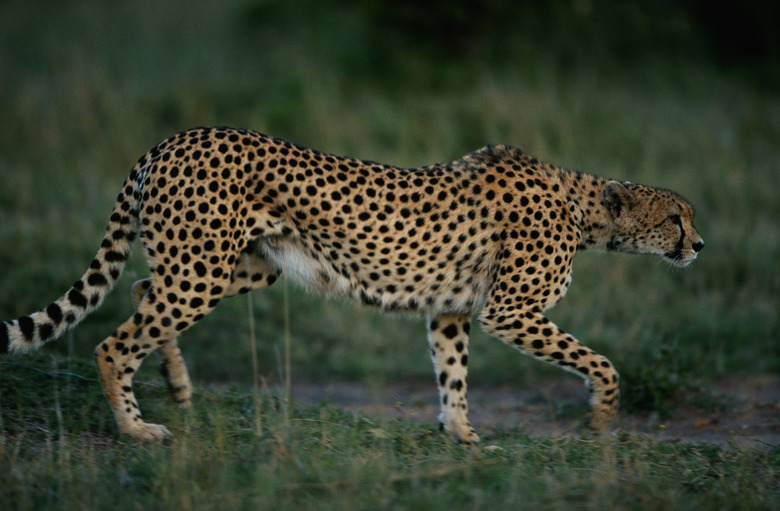Types Of Morphology
Morphology is the study of shape. In biology, shape often goes hand-in-hand with function. There are several types of morphology, from the level of the cell, from that of the tissue to that of the organ and finally to that of the entire organism. This diversity in the kinds of morphology allows for very specialized functions to be attained by a cell, tissue, organ, or organism as can be seen in several morphology examples.
TL;DR (Too Long; Didn't Read)
Morphology definition: the branch of biology dealing with the form and structures of living organisms at visible and microscopic levels.
Cellular Morphology
Cellular Morphology
Cells can come in all sorts of sizes and shapes. Epithelial cells are cells that form barriers, walls that prevent free passage of things from one side to other can occur in eight different forms. These eight forms are determined by whether the cells join to form one layer or multiple layers on top of each other, in addition to the cells' shape; squamous means wide, cuboidal means cubed, and columnar means rectangular. Other cell types, such as nerve cells, can be long and thin, while fat storage cells can be large and round.
Tissue Morphology
Tissue Morphology
Tissues can also have diverse morphologies, based on their function within an organism. Skeletal muscle cells form long bundles that are wrapped together. The bundles are connected to bones via tendons. These bundles are able to simultaneously contract to generate force. The epithelial tissue in your lungs contains grape-like sacs of cells that are efficient at gas exchange, helping you breathe in oxygen and breathe out carbon dioxide. The firm jelly-like nature of cartilage tissue between your bones is able to absorb shock from the force of your walking and running.
Organ Morphology
Organ Morphology
Organ morphology also follows the shape and function pattern. The human heart has four chambers. The two bottom chambers are called ventricles and have thick, muscular walls compared to the two upper chambers, the atria. The ventricle walls are thick because these two chambers need to pump blood to the large areas of the body. Another example of organ morphology is the female human breast. It is a system of grape-like ducts that merge into on main duct. The grape-like sacs produce milk and contract to push the milk into the main duct and out of the nipple.
The Whole Organism
The Whole Organism
The largest level of morphology is that of the entire organism. In the animal kingdom, the two main body plans are radial symmetry, like that of the starfish, and bilateral symmetry, like that of the lobster. Another type of diverse organismal morphology is fin structure for swimming, compared to limb structure for sprinting. Dolphins have five fins that help them keep balance and regulate body temperature. Cheetahs have light weight, aerodynamic bodies that are flexible for fast chases.
References
- Antranik: Eight types of epithelial tissue
- Molecular Cell Biology: Overview of Neuron Structure and Function
- Encyclopedia of Sports Science: Adipose Tissue
- Web MD: Lung Disease & Respiratory Health Center
- Atlas of Echocardiography: Gross Anatomy of the Heart
- Wheater's Functional Histology: The Breasts
- Understanding Evolution: Bilateral Symmetry
- Understanding Dolphins: Fin Structure & Function
Cite This Article
MLA
Ph.D., David H. Nguyen,. "Types Of Morphology" sciencing.com, https://www.sciencing.com/types-morphology-17126/. 17 September 2018.
APA
Ph.D., David H. Nguyen,. (2018, September 17). Types Of Morphology. sciencing.com. Retrieved from https://www.sciencing.com/types-morphology-17126/
Chicago
Ph.D., David H. Nguyen,. Types Of Morphology last modified March 24, 2022. https://www.sciencing.com/types-morphology-17126/
